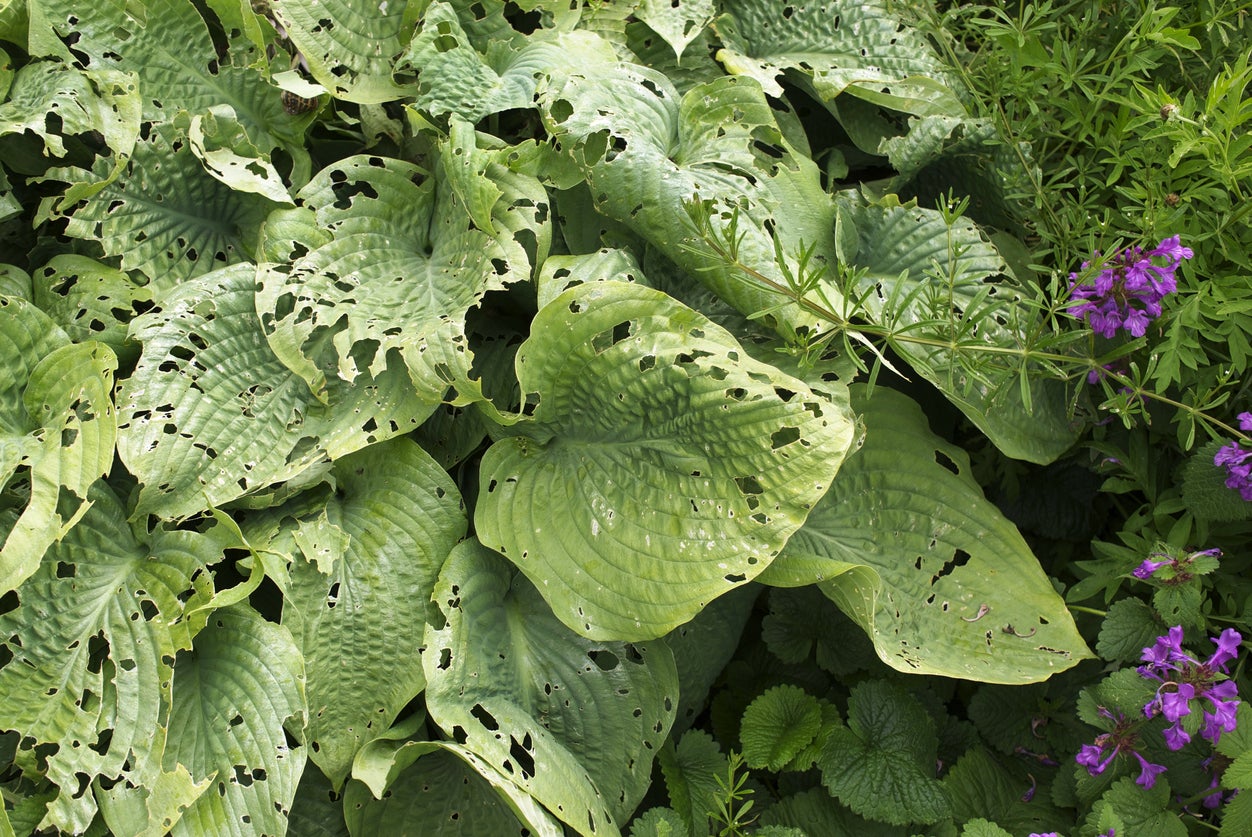What Causes Holes In Hosta Leaves – Preventing Holes In Leaves Of Hosta


Hostas are one of those dependable landscape plants that we often don’t look at closely. Once properly planted, they return in early spring. Since these plants are usually bigger and more beautiful than last year, we rarely take a closer look, that is until we begin to notice the hosta leaves have holes.
Holes in Leaves of Hosta
Sometimes a closer look may reveal there are holes in hosta leaves. This is not a regular occurrence, but we don’t want our plants damaged. Likely, the damage will occur as spring ends and summer comes with the high heat that attracts eggs to hatch and pests to feed on our young, growing plants. Tattered leaves may appear, ruining the appearance of our perfect shade beds and gardens.
Why are There Holes in My Hosta?
When you’ve noticed what the holes look like and where on the leaf they are, you may have a clue as to what its cause may be. Large, irregular holes throughout the leaves may indicate a chewing pest, such as grasshoppers. You can use Carbaryl in dust form (Sevin) in the morning to stop their munching. An alternative approach for these pests includes the use of a naturally occurring microbe called Nosema locustae.
If you look closely and find new holes in leaves of hosta that are smaller, about the size of paper punch holes, you may have vine weevils. Dust these with Sevin in the evening, as dusk falls. Beneficial nematodes can also help take care of these insect pests.
If neither of these describe where or how your hosta plant has holes, you may be getting damage from slugs, snails, or both. Inspect the leaves with a flashlight at night, checking the ground and the underside of the leaves. A granular product called Sluggo is a possibility to get rid of them. You can also pick them off and dump in soapy water. Or you can put a homemade beer trap right where the slugs can drink, fall in, and meet their demise. A shallow lid from a peanut butter jar is deep enough but refresh it every few days.
Browsing deer stopping by for a snack are also a possibility, especially when leaves appear shredded. Add rosemary or other fragrant herbs to deter these animals.
All this damage may lead you to start pruning damaged leaves. However, this is not the time. Wait until after the killing frosts. You can remove fading flower blooms and stems at any time.
Sign up for the Gardening Know How newsletter today and receive a free copy of our e-book "How to Grow Delicious Tomatoes".

Becca Badgett was a regular contributor to Gardening Know How for ten years. Co-author of the book How to Grow an EMERGENCY Garden, Becca specializes in succulent and cactus gardening.